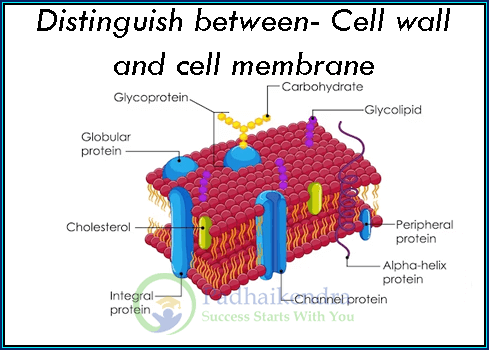The cell wall and cell membrane are both structures that surround and protect cells, but they have some key differences:
- Composition: The cell wall is primarily made of cellulose, chitin, or other complex polysaccharides in plants, fungi, and bacteria, while the cell membrane is made up of a phospholipid bilayer containing proteins and other lipids in both plant and animal cells.
- Function: The cell wall provides structural support and protection to the cell, while the cell membrane regulates the movement of molecules in and out of the cell, and helps maintain the cell’s internal environment.
- Permeability: The cell wall is generally less permeable than the cell membrane. While the cell membrane is selectively permeable, allowing some substances to pass through while blocking others, the cell wall provides a more rigid barrier that prevents the cell from expanding or contracting too much.
- Presence: The cell wall is found in plants, fungi, and bacteria, but not in animal cells. The cell membrane, on the other hand, is found in all types of cells.
- Thickness: The cell wall is generally thicker than the cell membrane, and provides more mechanical strength and resistance to external forces.
In summary, the cell wall and cell membrane are both important structures that surround and protect cells, but they have different compositions, functions, and levels of permeability. While the cell wall provides structural support and protection, the cell membrane regulates the movement of molecules in and out of the cell.





